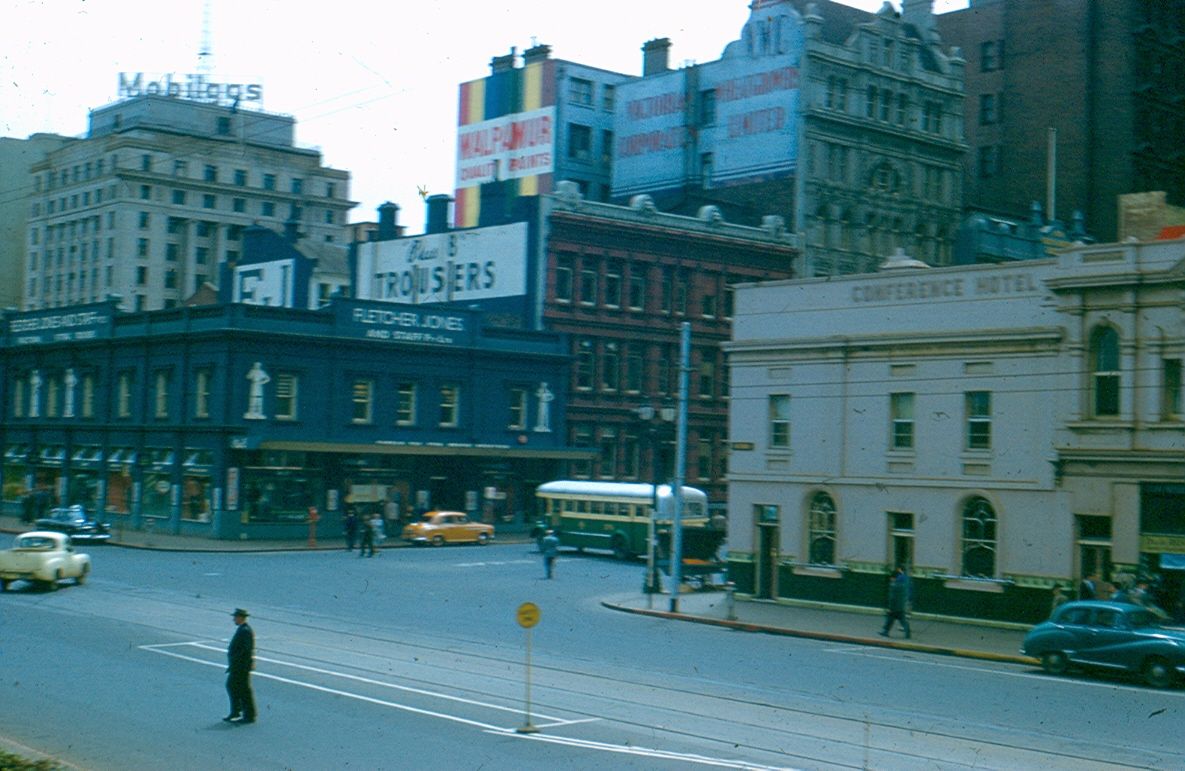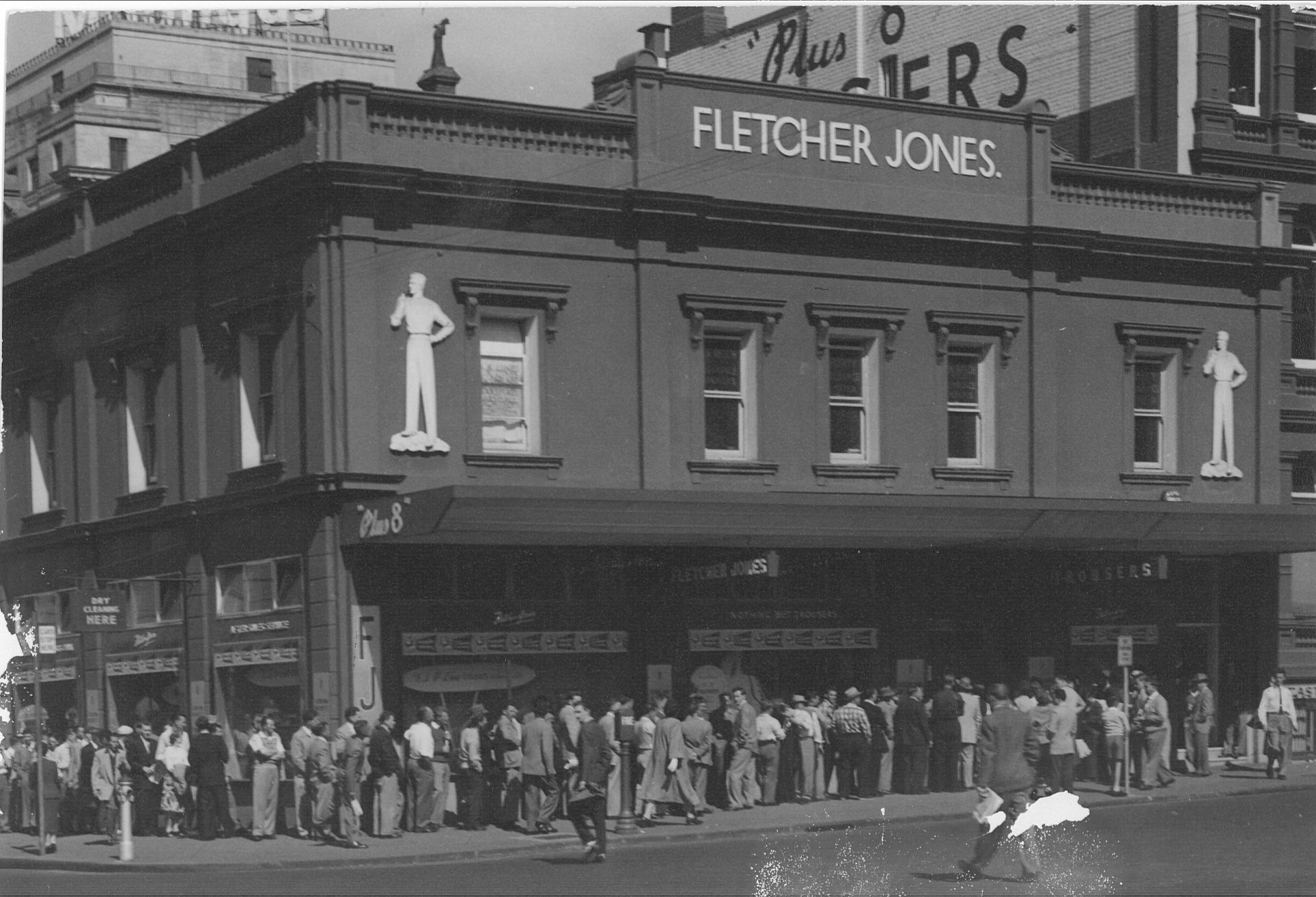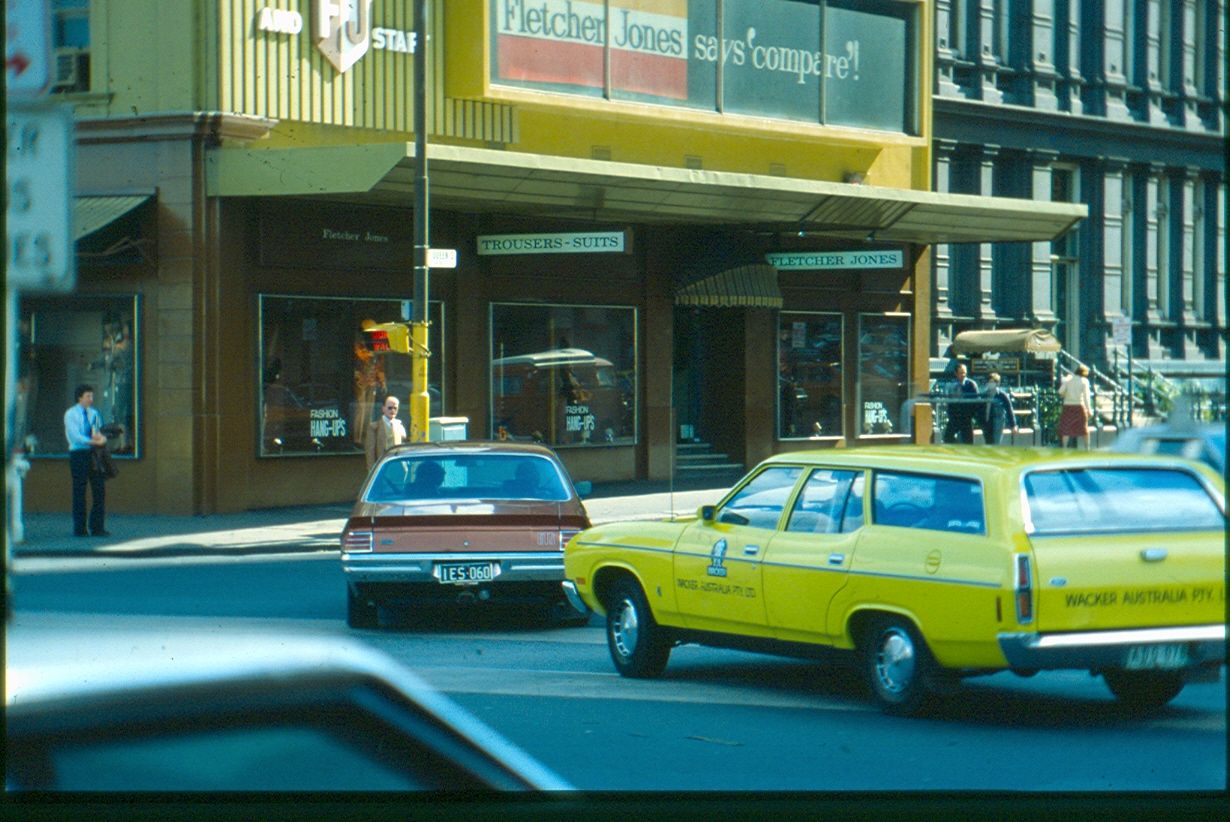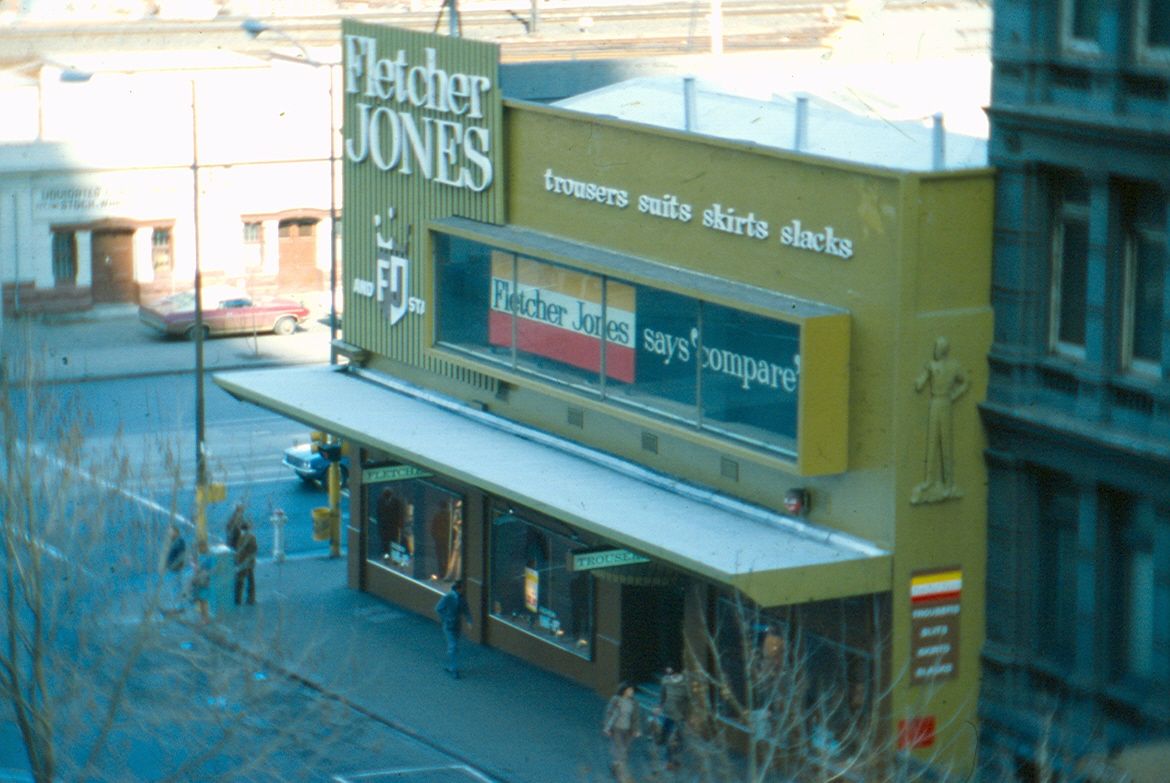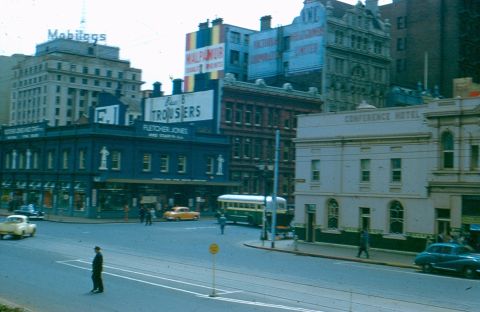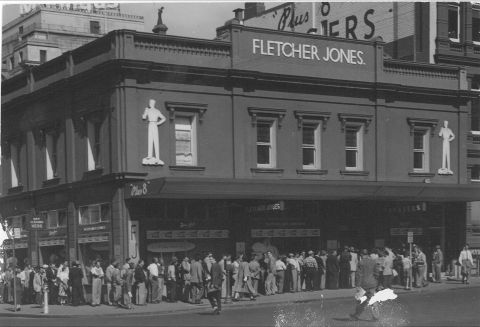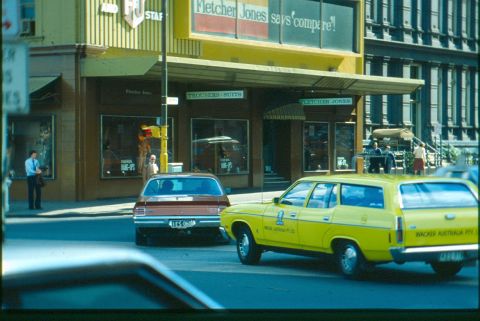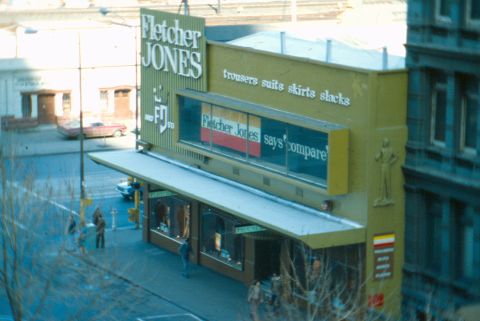Fletcher Jones' Queen Street store was close to my office in Melbourne, and once I'd bought my first suit there, I never went anywhere else.
I'd never worn tailor-made clothes before, and approached the venture with a degree of skepticism which vanished altogether as soon as the fitter took one look at me and correctly estimated, "You broke your collar-bone as a child, did you?" I'd never before noticed any lasting damage, but when he explained that the way it had been reset resulted in me carrying one shoulder slightly lower than the other (and of course he'd simply adjust the shoulder padding accordingly), I realized why I was paying such a premium for the privilege. I seem to remember, though, that I did realize fairly quickly that I'd be getting a suit that was not only made to measure, but also one that was made from a quality Australian-grown fabric in some beautiful shades of "quite respectable" colours.
Before too long, I found out that FJs were a customer of the company I worked for and eventually I was asked to visit the Warrnambool FJ Pleasant Hill factory. Once there, I was given an even greater appreciation of the breadth and depth of skill in the FJ company staff when I saw how a suit was made and from cloth that was kept in stable temperatures in storage areas in the limestone cellars underneath the factory. I'd never thought about it enough to realize the vast number of considerations that had to be made to maximise the yield from a single (expensive) roll of cloth — how to ensure that elements of the cloth such as stripes or checks, as well as the fibre itself, all ran in a consistent direction between pieces of the pattern for an item of clothing, while at the same time ensuring that as little of the precious material as possible was wasted. This was clearly a hard-earned skill shared by only a few very experienced pattern-makers, but a skill that was to become meat'n'potatoes to a bit of clever computer programming that allowed virtually every possible combination of laying out of pieces to make the maximum use of any given roll of cloth.
The other thing that greatly impressed me during my visit was seeing the same principles applied many times over to ready-to-wear clothes. On a vast cutting table the cloth was laid out and folded back over itself again and again before being cut — for many iterations of the same component of the same type of garment, in the same size — by a laser cutting-head that must truly have been state of the tailor's art at the time.
Sadly, everything was to change, and business declined — as (eventually) it did for the company that employed me — and Fletcher Jones eventually folded.
Contributed by BB (who otherwise would like to be anonymous).
